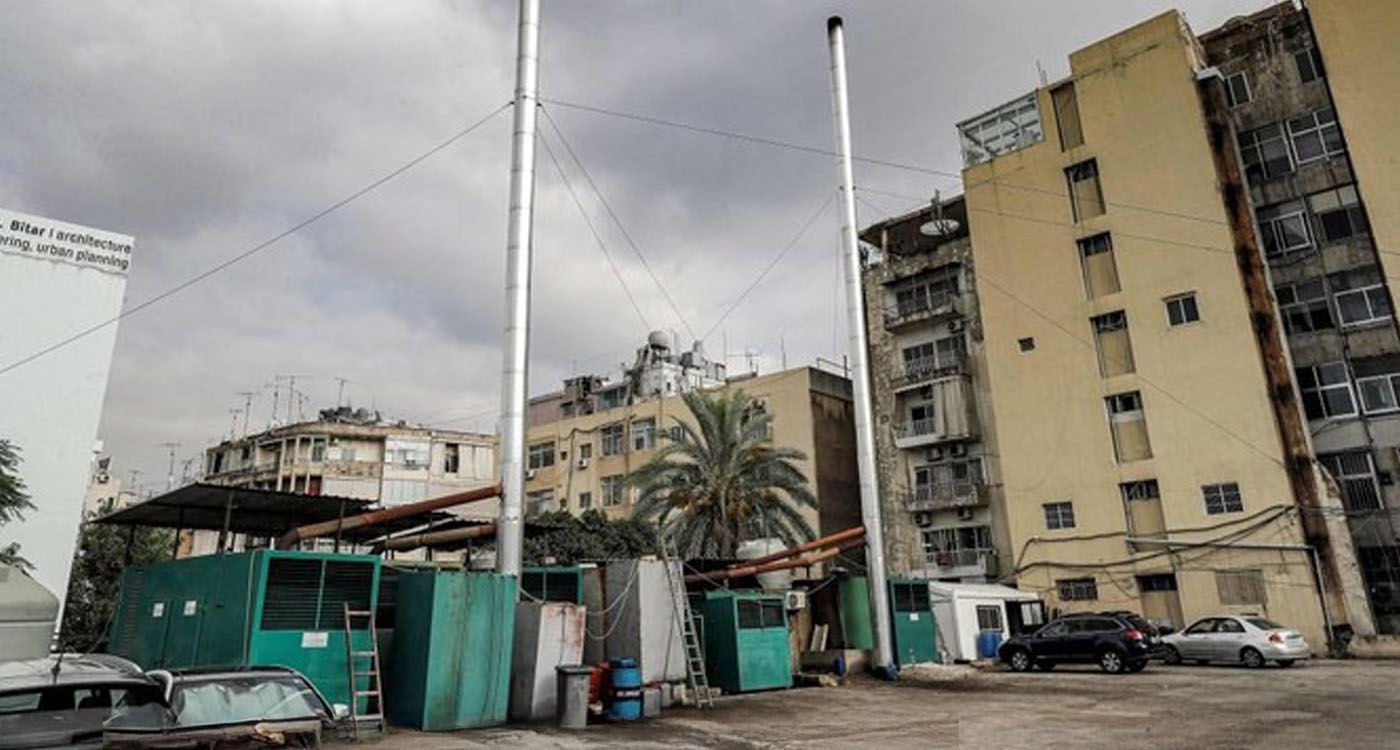
The air that Lebanese people breathe is deadly. In a country deprived of electricity for years, the neighborhood generators have invaded the entire territory. While their purring has become the soundtrack of our nights without power, their impact goes far beyond simple auditory discomfort. Invisible to the naked eye, their emissions are slowly suffocating a country already out of breath. Masks on our noses and determination clinging to our bodies, This is Beirut took a closer look at these killer generators.
They appeared in the 1990s, just after the end of the civil war. Four decades later, they are still here and are more powerful, more numerous, louder. These diesel giants have colonized the streets, balconies, rooftops and backyards. Lebanon lights up through explosions of decibels and toxic clouds.
As if that Weren’t Enough...
To this already unbreathable landscape, we add our local specialties. Because in Lebanon, we don’t just pollute, we do it with flair. Burning tires to block a road? A tradition. Letting garbage pile up at intersections? A classic. Incinerating it in the open air to “make space”? Practical (but toxic). Exhaust pipes, fireworks, trucks that spit their diesel fumes into the faces of unfortunate passersby. Not to mention the various explosions graciously offered by Israel with every new flare-up against Hezbollah, or the Iranian missiles lighting up the sky en route to the Hebrew state. Who knows what they leave behind, apart from traces of phosphorus and a scent of the apocalypse? Do they carry harmful particles too? Who knows.
But let us focus, for now, on those good old generators, those noisy roommates that power our fans… while attacking our lungs.
Generators: The Light That Kills
From the alleys of Beirut to the heights of Faraya, generators are everywhere: around 6,500 are counted across the country, releasing their toxic puffs daily into an already saturated air. They have gradually taken over from Electricité du Liban (EDL), the national company plagued by decades of mismanagement and corruption, which cost the state nearly $43 billion (37.8 billion euros) between 1993 and 2020. Heavily subsidized, the sector collapsed with the financial crisis, paving the way for these private giants. Since 2019, their anarchic proliferation has accelerated, fed by the collapse of the public grid. Today, generators are part of the urban landscape, just like tangled wires and torn garbage bags. Except these generators are killing us slowly.
Their main poison is PM₂.₅, fine particles from diesel, capable of penetrating deep into the respiratory tract, lodging there, aggravating existing diseases or triggering new ones.
Respiratory Diseases Galore
Dr. Carole Youakim, Pulmonary & Allergy Specialist at Mount Lebanon Hospital, is categorical, “Outdoor air pollution in Lebanon is mainly caused by road traffic, diesel generators, industrial emissions and domestic heating. Concentrations of fine particles (PM₂.₅ and PM₁₀) regularly exceed the safety standards set by the World Health Organization – up to 200% in some regions, especially in Beirut.”
She elaborates, “These excessive pollution levels are clearly associated with an increase in allergic diseases, asthma and COPD (chronic obstructive pulmonary disease), especially among middle-aged adults. A modeling-based study also showed that diesel generators help trap fine particles in urban areas, thus increasing residents’ exposure. There is a worrying increase in lung cancer cases among non-smoking patients, including young people. This trend is concerning. However, to date, there is no study establishing a direct causal link between generator exposure and cancer incidence. This is still an area that needs to be developed.”
Allergist and associate professor at HDF, Dr. Carla Irani, specifies, “Fine particles are particularly harmful to the respiratory tract. The smaller they are, the deeper they penetrate into the respiratory tree. PM₂.₅ reach the small airways, causing inflammation, asthma and chronic bronchitis.”
She warns, “In asthmatic or allergic patients, all international studies agree: pollution and climate change worsen symptoms. When pollen is combined with a pollutant, its allergenic power is multiplied. We are now seeing longer pollen seasons, and even in cities, people suffer more than in the mountains, because of this allergen-pollutant combination.”
She also notes, “Allergic rhinitis affects between 30 and 40% of the population, and asthma between 8 and 10%. What is worrying is seeing children with no family history develop these diseases. We also see an increase in chronic hives, eczema and even in-utero sensitization. Pollution exposure is a constant physical stress.”
According to a study by AUB, the concentration of toxic particles in certain neighborhoods has more than doubled since the economic crisis. “We are in red alert thresholds,” confirms a researcher in environmental health.
A Silent Explosion
Dr. Marwan Ghosn is an oncologist and professor of medicine, he is also the director of the postgraduate hematology-oncology program at USJ’s Faculty of Medicine. For him, the verdict is clear, “In five years, lung cancer cases have increased by 30%. That’s huge. And it doesn’t concern only smokers.” Air pollution, especially caused by generators, worsens cases of allergies, chronic pulmonary diseases such as asthma or bronchitis and ultimately, cancers.
He puts it in perspective, “A British study showed that with each increase in pollution levels, there is a clear rise in chronic inflammatory pulmonary diseases, which, in the long run, promote the development of lung cancer, even in the absence of smoking.”
Dr. Ghosn adds nuance, “Generators are a considerable source of pollution, but they’re not the only ones. Whatever the origin of the pollutant – exhaust pipe, truck or generator – it increases the overall pollution level, and the risk of cancer. It is especially chronic respiratory diseases that are exploding: asthma, bronchitis, inflammatory diseases.”
He gives a chilling number: 15,000 new cancer cases per year, including 3,000 of lung cancer. And this in a country with no recent statistics: the last national register dates back to 2016. What we do know, however, is that the clearest and most direct causes of cancer are tobacco and hookah. And on that note, one hookah session is equivalent to around 80 cigarettes.
A Law… Ignored
And yet, the law exists: anti-pollution filters are theoretically mandatory on generators. But inspections are virtually nonexistent. In March 2023, a ministerial circular reminded of this obligation, but it was completely ignored.
Solar energy remains inaccessible for many. But some municipalities are now experimenting with shared generators with built-in filters. A law on air quality and emissions already exists, but it still needs to be enforced.
And Now?
“It’s urgent to regulate and apply the existing laws, especially regarding tobacco. But that’s another challenge…” concludes Marwan Ghosn.
Lebanon lights up, yes, but at what cost? In trying to avoid blackouts, it may be our bodies that shut down one day.
The current flows.
The lungs collapse.





Comments